 by "ttyymmnn" (ttyymmnn)
by "ttyymmnn" (ttyymmnn)
Published 04/28/2017 at 12:45
 by "ttyymmnn" (ttyymmnn)
by "ttyymmnn" (ttyymmnn)
Published 04/28/2017 at 12:45
Tags: planelopnik
; planelopnik history
STARS: 12
Welcome to This Date in Aviation History , getting you caught up on milestones, important historical events and people in aviation from April 26 through April 28.
!!! UNKNOWN CONTENT TYPE !!!
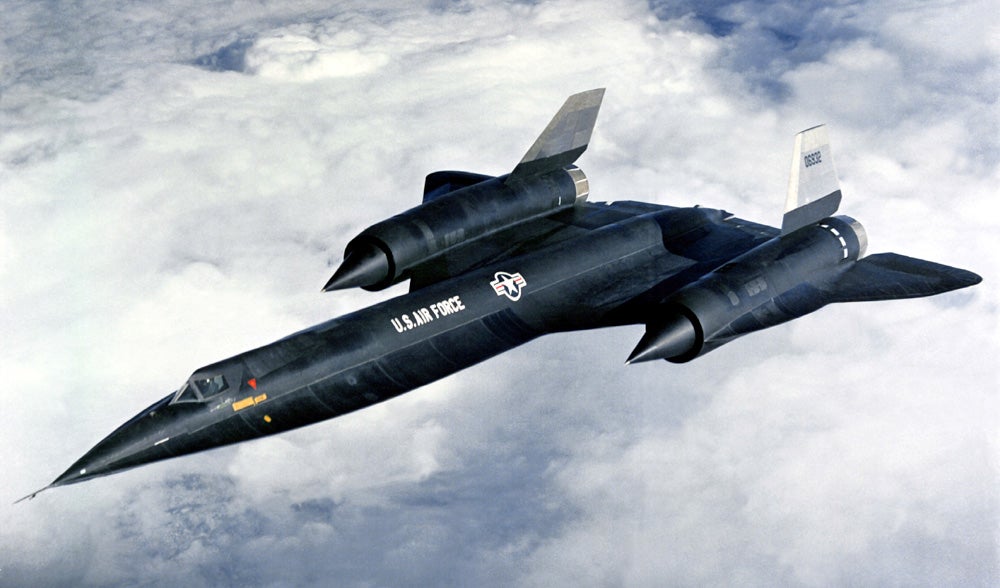
April 26, 1962 – The first flight of the Lockheed A-12. As the Cold War began to heat up, it was imperative for the United States to have eyes in the sky over the Soviet Union. Following WWII, the US began flying reconnaissance missions around the periphery of the Soviet Union, but these aircraft often became the targets of Russian fighters and fell prey to Russian guns. The answer to the problem was a new reconnaissance aircraft, one that could fly high enough to be out of reach of any contemporary fighter. At first, that aircraft was the Lockheed U-2 , which entered service in 1955. But it didn’t take long for the U-2 to become vulnerable to radar-guided missiles, and the CIA found themselves in need of a new plane that could fly still higher and faster. After the unsuccessful attempt of make the U-2 less observable to radar with Project Rainbow , Lockheed, and their super-secret Skunk Works , led by Kelly Johnson , began an internal project to develop a successor to the U-2 in a program that the CIA called Oxcart . The designs were nicknamed Archangel (the U-2 had been called Angel ) and as subsequent designs were developed and discarded, their designations went from A-1 to A-2 and so on. Competing against the Lockheed design was a delta wing aircraft proposed by Convair called the Kingfish . By 1959, the Kingfish design had progressed to offer a smaller radar cross section (RCS), and it was pitted against the latest Lockheed design, which by now was the A-12, which featured vertical stabilizers canted inwards to further reduce its RCS. Based on Lockheed’s record of producing the U-2 on time and under budget, the CIA awarded a contract for twelve A-12s on January 26, 1960. The A-12 was unlike any aircraft that had ever flown. It was constructed mainly of titanium, which required Lockheed had to develop entirely new ways of working with the exotic metal. In fact, there was so little domestic titanium available that the CIA used dummy corporations to purchase titanium from Russia, who were wholly unaware that their metal was being used to build an airplane that would one day spy on them with impunity. The titanium, combined with iron ferrite and silicon laminate composite materials along with asbestos, helped to further reduce the A-12’s RCS. Following the adoption of Pratt & Whitney J58 turbojets, the A-12 was now capable of speeds in excess of Mach 3.
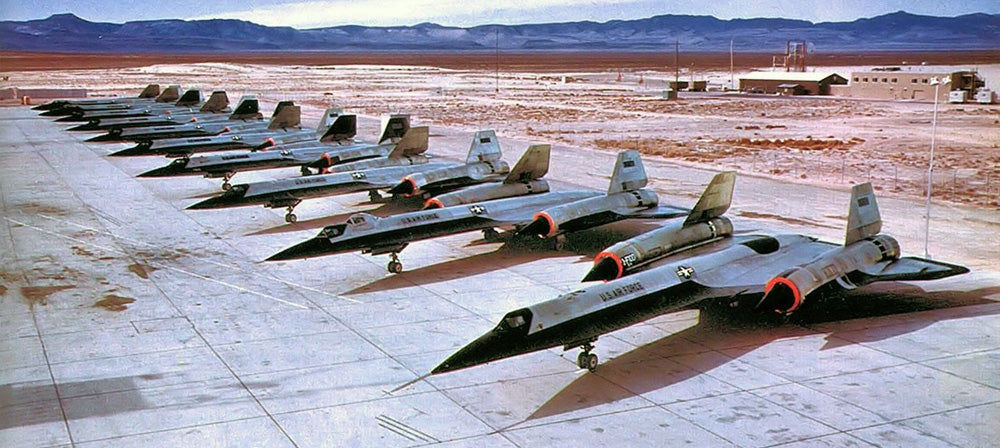
By any measure, the A-12 was an enormous aircraft. Essentially a fuel tank wrapped in titanium and mated to two enormous engines, the delta wing was just over 55 feet across and 1,800 square feet in size. The entire aircraft measured a whopping 101 feet long and it was 18-and-a-half feet tall. Its radar could reach out nearly 800 miles, an extraordinary distance until you realize that the A-12 could cover that distance in just 20 minutes at top speed. Performing a U-turn at Mach 3 required a 180-mile turning radius. And that incredible speed allowed the aircraft to set 12 official speed records. The extreme heat generated by those speeds was mitigated by the use of a corrugated skin that could expand and contract as the aircraft heated and cooled. Ironically, though the A-12 was developed to spy on Russia, it never undertook that mission. At the time it entered service, the US government deemed flights over the Soviet Union too dangerous, and believed that the reconnaissance job could be handled by US satellites. So, the A-12s were instead sent to Kadena Air Base on the island of Okinawa in 1967, where they flew missions over North Vietnam, and over North Korea during the Pueblo crisis . There the A-12 showed that, while it could be tracked by targeting radar, the missiles sent against it were unsuccessful in shooting it down. Though the A-12's career was relatively short, its legacy is long lasting. Soon after development of the A-12, Lockheed began working on its successor, the SR-71 Blackbird . With the arrival of the SR-71 in 1966, the A-12 program officially ended, and the final flight took place in 1968. Though the A-12 was faster and could fly higher, the SR-71 was stealthier and more capable, and the Blackbird would serve until 1999 and carry out many of the reconnaissance missions originally intended for the A-12. While the majority of A-12s were built for the CIA, the Air Force experimented with the YF-12, an armed interceptor version that could carry three Hughes AIM-47A air-to-air missiles housed in an internal bomb bay, but they chose not to adopt it. (Department of Defense photo; US Air Force photo)
!!! UNKNOWN CONTENT TYPE !!!
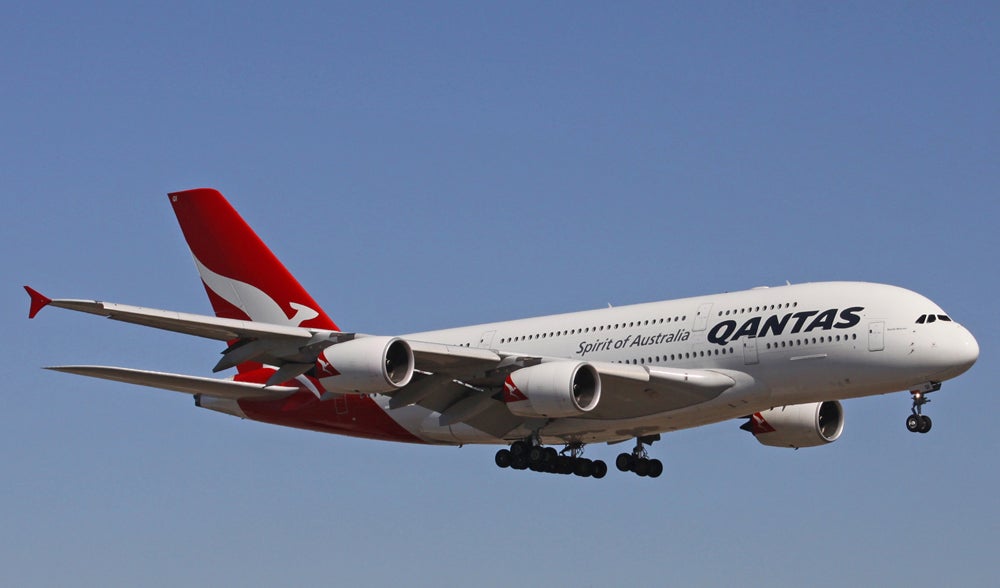
April 27, 2005 – The first flight of the Airbus A380. When the Wright Brothers made their first flight in 1903, their airplane carried a single pilot. But as the airplane grew and matured, the number of people it could carry also grew, and by the 1950s jet-powered airliners were carrying about 50 passengers, a number that seems small to us today. When airliners had gotten about as long and as wide as possible, somebody had the idea of making a double-deck aircraft. The earliest examples were large flying boats, such as the Short Sandringham and the Boeing 314 Clipper . After WWII, military aircraft, such as the Douglas C-124 Globemaster II , took advantage of the added deck to carry more soldiers to far off battlefields. With airliners, however, many of the aircraft that are considered double-deckers have only a partial second level, such as the Boeing 747 , or a second level that is mostly used for galley space. There are only two fully double-decker airliners: the Breguet Deux-Ponts , a post-war piston powered airliner, and the Airbus A380, a mammoth double-decker that could only fly in the modern era of composite construction and powerful, efficient jet engines. Boeing had been the king of the airliner business for years and, with the introduction of the 747 in 1970, they had cornered the market on large airliners. In order to break Boeing’s stranglehold, Airbus began a secret project to develop an ultra-high-capacity-airliner (UHCA) in 1988. After exhaustive research into the feasibility of such a large airliner, and having received design concepts from each of its European partners, Airbus announced the A3xx program in June 1994. Among the designs Airbus considered was a double fuselage arrangement that would knit two Airbus A340 fuselages together side-by-side. But in the end, they decided on a full double-deck design as being more feasible, and the program was officially launched on December 19, 2000 with fifty firm orders from six customers. Manufacturing began in January 2002.
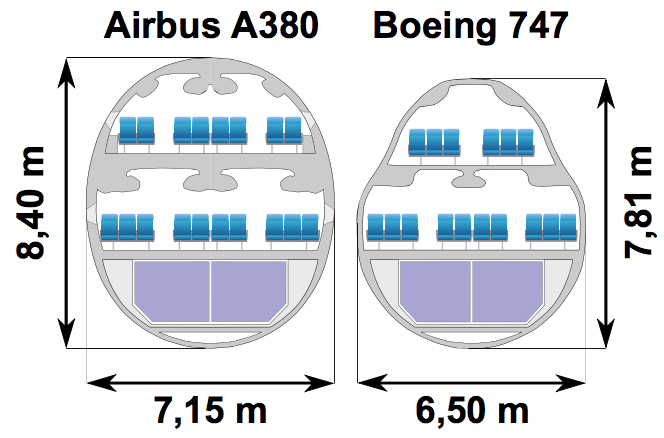
Like other Airbus airliners, the construction of major components takes place throughout Europe, with parts from France, Spain, the United Kingdom and Germany being shipped to Toulouse, France for final assembly. For an aircraft of its size to fly, and carry a useful load, it must remain as light as possible. Though the majority of the A380 is constructed of traditional aluminum, 20% of the airframe is constructed from composite materials, with heavy use of composites in the wings, and the A380 is the world’s first airliner to have a wingbox constructed from carbon reinforced plastic. Depending on the requirements of the purchaser, the A380 is powered by either four Rolls-Royce Trent 900 or four Engine Alliance GP7000 turbofan engines and is capable of cruising speeds of 587 mph (Mach 0.85) with a range of over 9,000 miles. Currently, the longest flight by an A380 is from Dubai, UAE to Auckland, New Zealand, just over 8,800 miles. The A380 was conceived to take part in the hub-and-spoke theory of air travel, in which large airliners would transport large numbers of passengers to a centralized airport, where they could then take flights to their final destinations on smaller airliners. To that end, the A380 can accommodate 544 passengers in a 4-class configuration, 644 in a 2-class configuration, and an incredible 868 passengers in a single-class arrangement. The first A380 entered service with Singapore Airlines in 2007, and it now serves with thirteen operators worldwide. Though Airbus has delivered 143 A380s since its introduction, the airliner faces a troubled future, as improvements in range and capacity of smaller, twin-engined airliners have made them more popular with carriers who have an easier time filling a smaller aircraft to capacity. Facing the reality of the current airliner market, Airbus recently announced a plan to reduce production of the A380 as it faces order cancelations, even with fuel costs at a record low. As of March 2017, Airbus has 317 firm orders and has delivered 210 aircraft. And while Airbus is no longer losing money on each A380 it sells, it remains unlikely that they will ever recoup the $25 billion investment it made to develop the giant airliner. (Photograph by the author; illustration via Wikimedia Commons )
!!! UNKNOWN CONTENT TYPE !!!
!!! UNKNOWN CONTENT TYPE !!!
!!! UNKNOWN CONTENT TYPE !!!
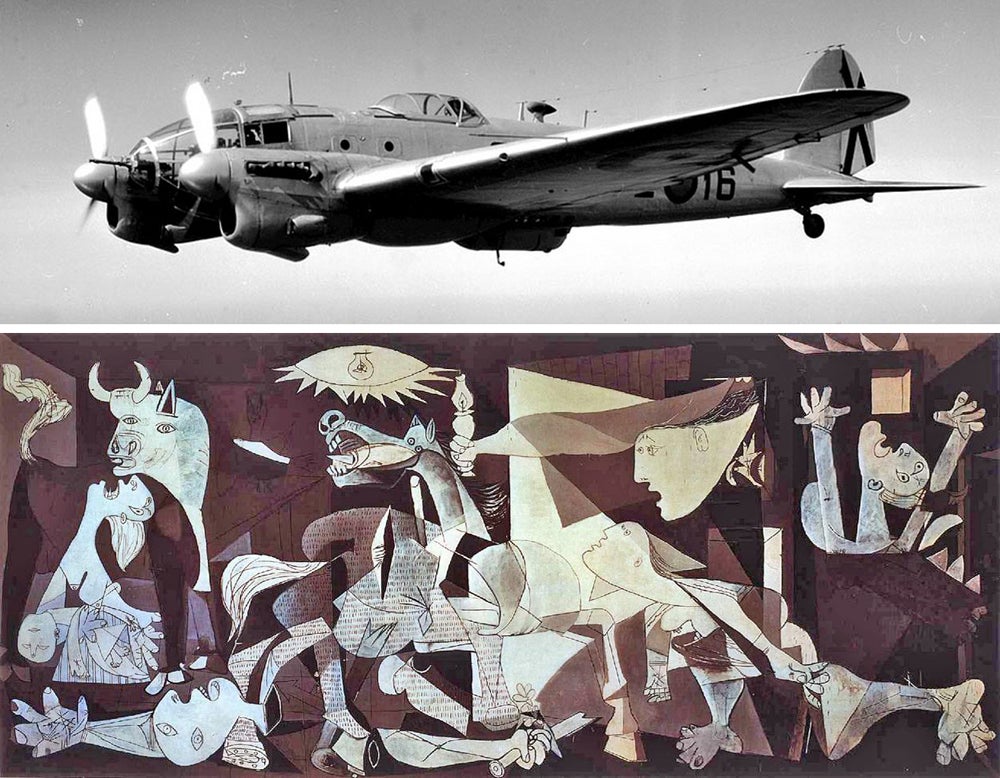
April 26, 1937 – Luftwaffe bombers of the Condor Legion attack the Spanish city of Guernica. During the Spanish Civil War , the Nationalists turned to Germany and Italy for aid in fighting the Republicans , and the German Luftwaffe saw the conflict as an opportunity to hone the tactics of aerial warfare that they would use during the upcoming invasion of Europe. Acting on the request of the Nationalist government, Heinkel He 111s of Germany’s Condor Legion bombed the defenseless civilian population in what historians consider the first instance of terror bombing as an effort to break the will of an enemy. During the German occupation of Paris in WWII, Pablo Picasso reportedly passed out photographs of his famous Guernica painting (above) to German soldiers. When they asked him, “Did you do this?” he replied, “No. You did.”
!!! UNKNOWN CONTENT TYPE !!!
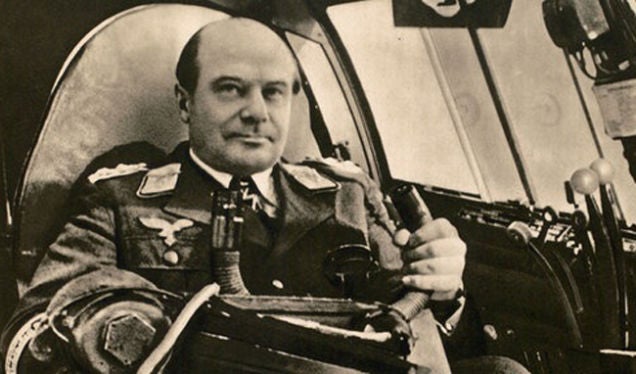
April 26, 1896 – The birth of Ernst Udet, the second-highest scoring ace of WWI and the highest scoring ace to survive the war. Udet served under Manfred von Richthofen in Jagdgeschwader 1 (the Flying Circus ) where he scored 62 confirmed victories. Following the war, Udet flew as a stunt pilot and barnstormer, then joined the Nazi Party in 1933 and was instrumental in the development of the Luftwaffe , particularly the dive bombing tactics employed by the Junkers Ju 87 Stuka . Following Germany’s inability to destroy the RAF in the Battle of Britain , Luftwaffe chief Hermann Göring led Hitler to believe that the loss was Udet’s fault, and Udet committed suicide on November 17, 1941. (Photo author unknown)
!!! UNKNOWN CONTENT TYPE !!!
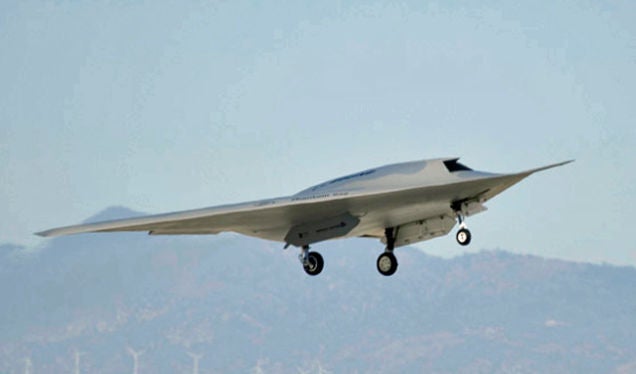
April 27, 2011 – The first flight of the Boeing Phantom Ray, a stealthy unmanned combat air vehicle (UCAV) being developed internally by Boeing. As part of Boeing’s Project Reblue, Boeing is developing the Phantom Ray to take on autonomous missions that will include reconnaissance, ground attack and autonomous refueling, as well as suppression of enemy air defenses and seek and destroy missions. The Phantom Ray was designed by the Boeing Phantom Works , and is a development of it earlier X-45 prototype. (NASA photo)
!!! UNKNOWN CONTENT TYPE !!!

April 27, 1991 – The first flight of the Eurocopter Tiger, a two-seat tandem attack helicopter built by Airbus Helicopters (formerly Eurocopter). The Tiger ( Tigre in France) was initially developed as a Cold War -era anti-tank helicopter but, with the dissolution of the Soviet Union in 1991, its mission was changed to a multirole helicopter. The Tiger is the first all-composite helicopter developed in Europe, and is roughly comparable to the Boeing AH-64 Apache . The Tiger was deemed ready for service in 2008, and the first Tigers saw action in Afghanistan in 2009. A total of 206 have been built, and they serve the armed forces of Australia, France, Germany and Spain. (Photo by Alan Lebeda via Wikimedia Commons )
!!! UNKNOWN CONTENT TYPE !!!
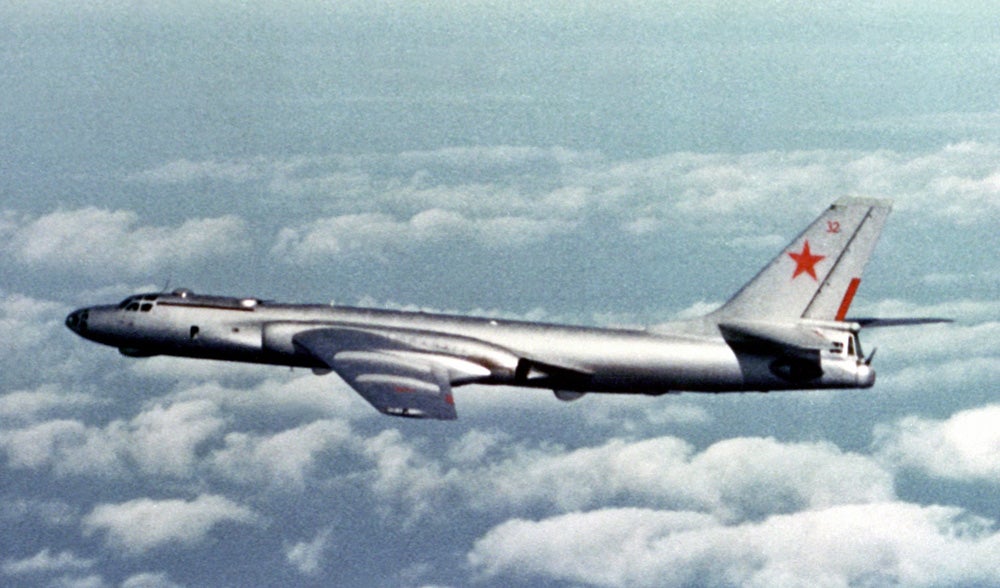
April 27, 1952 – The first flight of the Tupolev Tu-16, a twin-engine strategic bomber designed to carry up to 9,000 lbs of nuclear or conventional weapons. Following WWII, the only long range bomber the Soviets possessed was the Tupolev Tu-4 (NATO code name Bull), which was a reverse engineered copy of the Boeing B-29 Superfortress . With the development of turbojet engines, Tupolev began work on a jet-powered, swept-wing bomber with a range of up to 3,000 miles. In addition to the original bomber version, the Tu-16 (NATO code name Badger) was also developed into reconnaissance, electronic intelligence and electronic warfare variants, as well as a passenger variant that served with the Soviet airline Aeroflot . Just over 1,500 Tu-16s were produced and exported to most Eastern Bloc nations and other Russian-allied states. (US Navy photo)
!!! UNKNOWN CONTENT TYPE !!!
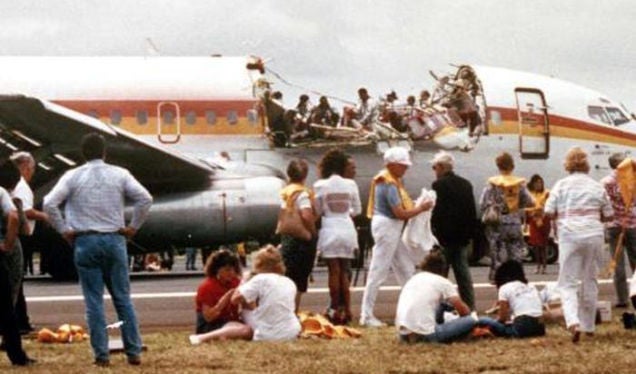
April 28, 1988 – Aloha Airlines Flight 243 loses a section of its fuselage during flight. Aloha Airlines 243 was a Boeing 737-200 (N73711) that made regular short flights between the Hawaiian Islands. While the airframe had only experienced 35,496 flight hours at the time of the accident, it had undergone 89,680 flight cycles (takeoff and a landing), exceeding the aircraft’s design limits. While cruising at 24,000 feet, a large section of the upper fuselage directly behind the cockpit tore away, exposing the passengers to the elements. One flight attendant was blown from the plane and died, but the 65 passengers, all of whom were belted at the time, survived, though some were seriously injured. An investigation by the NTSB cited metal fatigue aided by corrosion from the salty, humid environment, the high number of cycles, and inadequate maintenance practices as factors contributing to the accident. (Photo author unknown)
!!! UNKNOWN CONTENT TYPE !!!
!!! UNKNOWN CONTENT TYPE !!!
!!! UNKNOWN CONTENT TYPE !!!
!!! UNKNOWN CONTENT TYPE !!!
!!! UNKNOWN CONTENT TYPE !!!
!!! UNKNOWN CONTENT TYPE !!!
!!! UNKNOWN CONTENT TYPE !!!
If you enjoy these Aviation History posts, please let me know in the comments. And if you missed any of the past articles, you can find them all at Planelopnik History . You can also find more stories about aviation and aviators at Wingspan and Planes You’ve (Probably) Never Heard Of .
!!! UNKNOWN CONTENT TYPE !!!
 "RamblinRover Luxury-Yacht" (ramblininexile)
"RamblinRover Luxury-Yacht" (ramblininexile)
04/28/2017 at 12:58, STARS: 3
Ernst Udet was also a prolific doodler.
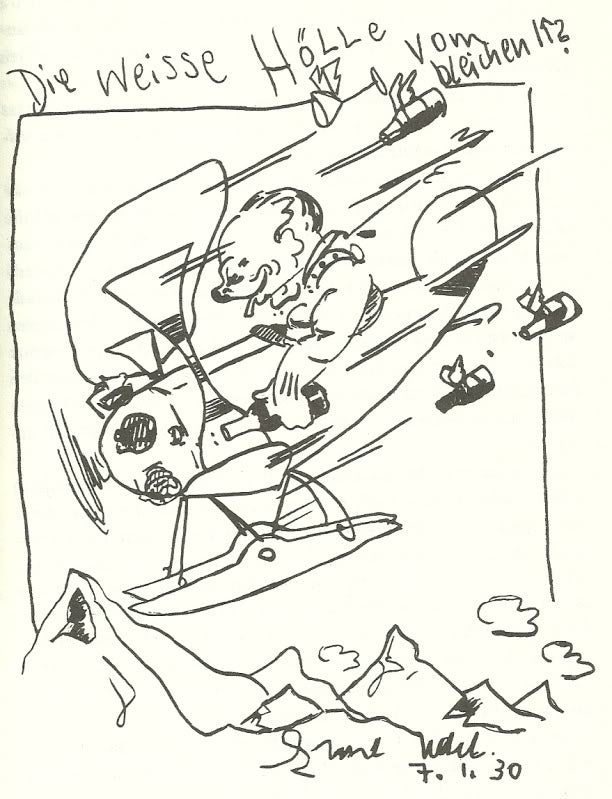
There exist many doodles of himself like the above, and also doodles of Goering, Milch, and others.
 "S65" (granthp)
"S65" (granthp)
04/28/2017 at 13:08, STARS: 0
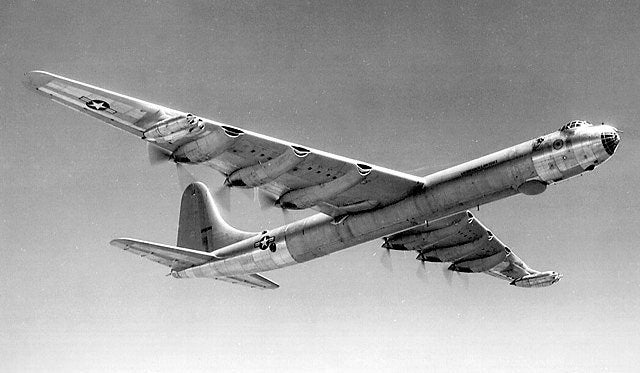
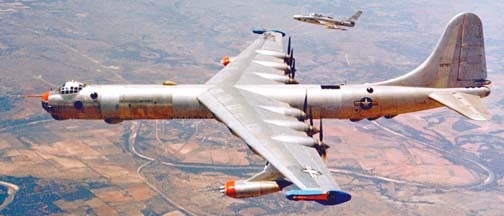
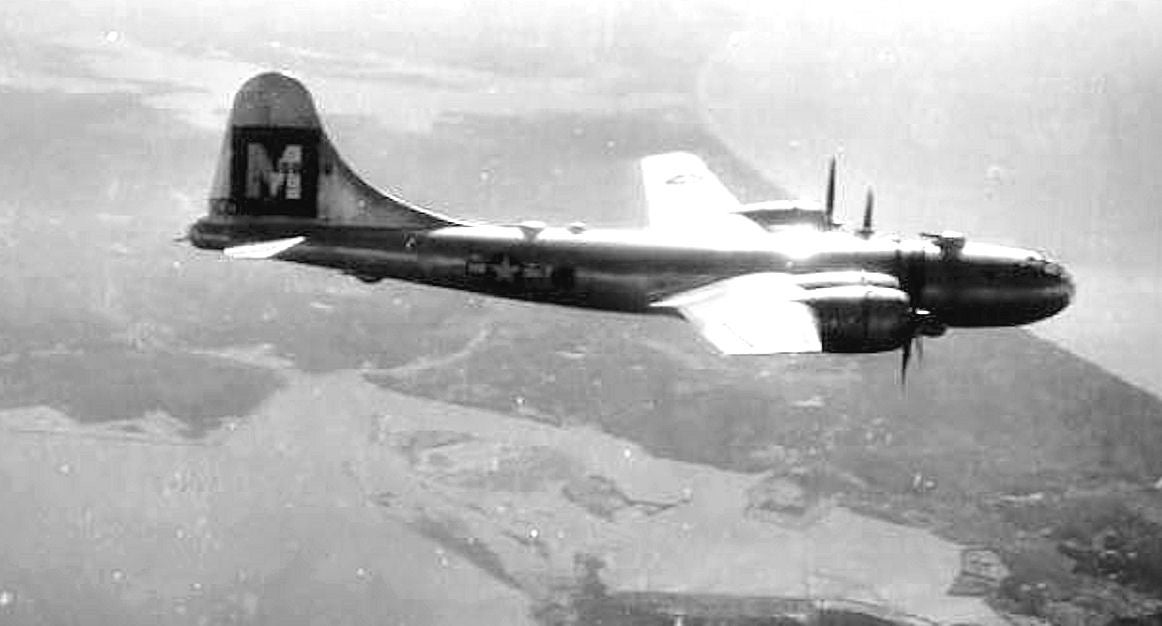
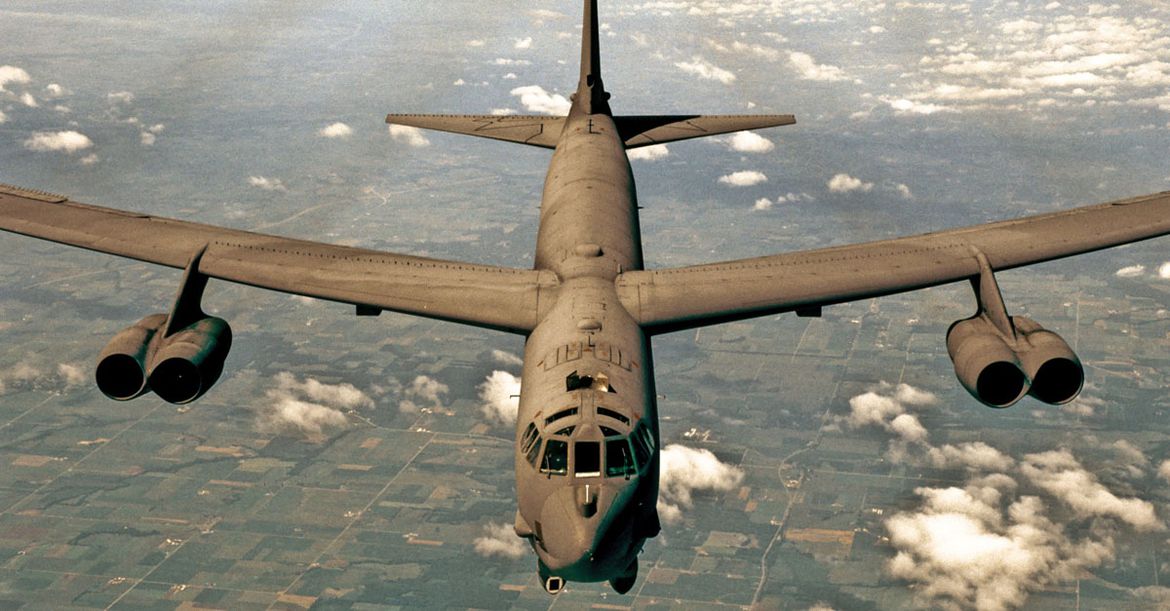

Good job my dude, have some bombers
 "ttyymmnn" (ttyymmnn)
"ttyymmnn" (ttyymmnn)
04/28/2017 at 13:10, STARS: 0
Thanks!
 "HammerheadFistpunch" (hammerheadfistpunch)
"HammerheadFistpunch" (hammerheadfistpunch)
04/28/2017 at 13:12, STARS: 1
I didn’t know about project rainbow or kingfish until today, thanks!
 "Smallbear wants a modern Syclone, local Maple Leafs spammer" (smallbear94)
"Smallbear wants a modern Syclone, local Maple Leafs spammer" (smallbear94)
04/28/2017 at 13:13, STARS: 2
The development on the A12 is fascinating. The problems they had to overcome were incredible. To name a few:
- Titanium tech was only just getting started. The first panels produced were extremely brittle.
- Tests showed that with the extreme heat of Mach 3 the wings would warp in flight. Johnson apparently took inspiration from the corrugated skins of early airliners to build in room for the metal to expand.
- Some welded panels lasted indefinitely, others failed almost immediately. The problem was eventually traced to high chlorine content in the water used to wash the panels welded in the summer.
- To save weight the skin of the A12 was its fuel tank. This meant that it would leak constantly while on the ground. To reduce risk of fire both on the ground and in the air (because of the heat from the skin), the ordinary jet fuel was replaced by JP-7, which was so stable it wouldn’t even burn in the engines unless combined with triethylboran, which could be carried in a small, separate tank.
- When the J58's were finally installed, the couldn’t be spun to operating speed... the problem was solved by a ground starter with two Buick racing engines.
 "ttyymmnn" (ttyymmnn)
"ttyymmnn" (ttyymmnn)
04/28/2017 at 13:15, STARS: 1
Thanks for all of that. I can always count on folks to add more info than I have room for!
 "ttyymmnn" (ttyymmnn)
"ttyymmnn" (ttyymmnn)
04/28/2017 at 13:16, STARS: 0
My work is done!
 "WilliamsSW" (williamssw)
"WilliamsSW" (williamssw)
04/28/2017 at 13:22, STARS: 1
If you ever find yourself in Madrid, visiting the Reina Sofia to see Guernica is an absolute MUST. I learned the history of this painting shortly before seeing it, and it was a moving experience. While I was there (2002), there were numerous Spaniards there, just mesmerized by it- at least one of which was openly weeping at the sight of it.

04/28/2017 at 13:26, STARS: 2
Minor quibble: an epoxy sealant was used on the Blackbirds to seal the “wet wings”, however, the JP-7 attacked it, despite several reformulations. Eventually Lockheed and the Air Force gave up trying, and set specific limits for how much fuel could leak before remediation was needed.
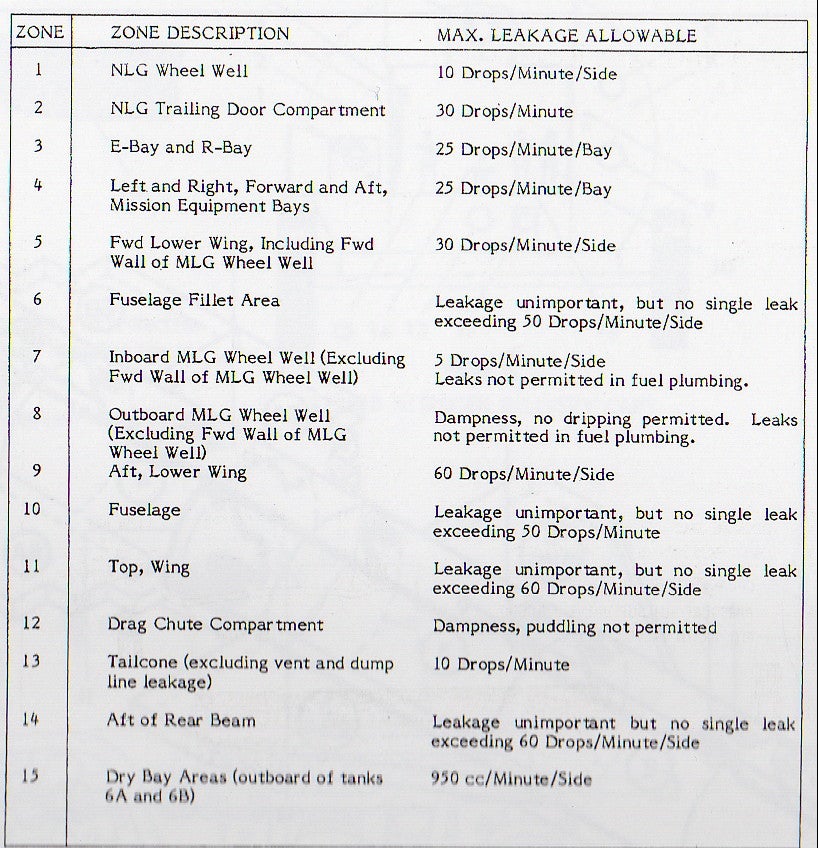
 "Smallbear wants a modern Syclone, local Maple Leafs spammer" (smallbear94)
"Smallbear wants a modern Syclone, local Maple Leafs spammer" (smallbear94)
04/28/2017 at 13:30, STARS: 0
I love this. Brute force methods on an otherwise exquisite piece of engineering.
 "ttyymmnn" (ttyymmnn)
"ttyymmnn" (ttyymmnn)
04/28/2017 at 13:43, STARS: 1
I’d love to see it. I can’t even really imagine what it must have been like for those civilians. Nothing like that had been done before. They probably thought the planes were flying over on their way somewhere else. It’s impossible to comprehend the terror those people must have felt, though Picasso captured it somehow.
 "WilliamsSW" (williamssw)
"WilliamsSW" (williamssw)
04/28/2017 at 13:49, STARS: 0
You don’t explicitly say it in the post, but many historians refer to it as the first instance of “strategic bombing” - a terrible euphemism for “intentionally bombing innocent civilian populations”, of course.
 "ttyymmnn" (ttyymmnn)
"ttyymmnn" (ttyymmnn)
04/28/2017 at 13:56, STARS: 1
Good point, and there is a very definite distinction between strategic and tactical bombing.
 "WilliamsSW" (williamssw)
"WilliamsSW" (williamssw)
04/28/2017 at 14:02, STARS: 0
Very distinct, yes. And use of the term ‘Strategic Bombing’ is offensive, in my view. IIRC, though, there are other candidates for the dubious honor of the first attack on civilians.

04/28/2017 at 14:16, STARS: 3
When that family portrait of the A-12s was first released, the mountains behind were actually airbrushed out, to disguise where the Blackbirds were being built and tested.
The only two seat A-12 (not counting the YF-12s and M-21s),#60-6927 flew all of it’s thousand or so hours on the same J-75 used by the F-105 and U-2 (and, in it’s civilian guise as the JT4A, on the 707 and DC-8). As a result, it couldn’t reach Mach-3, but interestingly enough, has the black-painted composite rudders of an SR-71, even as the rest of the wings and fuselage are in natural titanium.

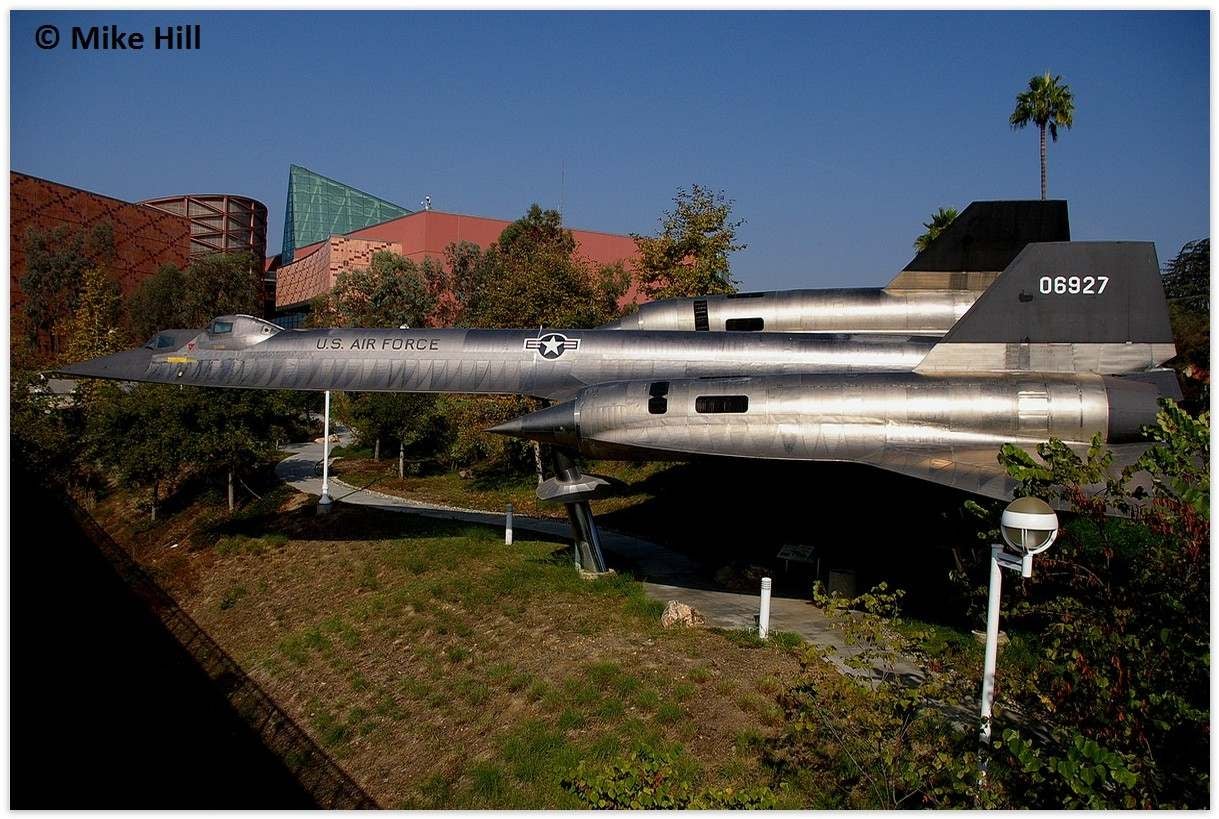
 "ttyymmnn" (ttyymmnn)
"ttyymmnn" (ttyymmnn)
04/28/2017 at 14:17, STARS: 1
There may be, but I think Guernica was the first instance of planned bombing intended to kill civilians as a means of waging war. You know, strategic bombing.
 "ttyymmnn" (ttyymmnn)
"ttyymmnn" (ttyymmnn)
04/28/2017 at 14:21, STARS: 0
Fascinating stuff. Thanks!
 "WilliamsSW" (williamssw)
"WilliamsSW" (williamssw)
04/28/2017 at 14:30, STARS: 1
Yeah - seeing the painting in person (it’s enormous - ~25' by 12') and understanding exactly what Picasso is depicting, is horrifying and moving.

04/28/2017 at 17:40, STARS: 1
OK, in that second pic the B-36 has tip pods, which weren’t standard AFAIK; what the hell is it?
From the golden age of “Sure, why not?”,
FICON
and Project
Tom-Tom
.
!!! UNKNOWN CONTENT TYPE !!!